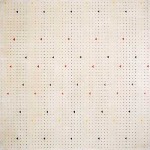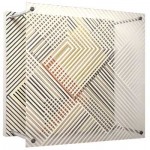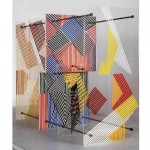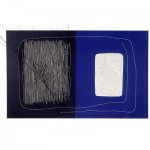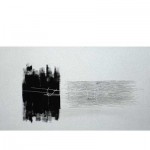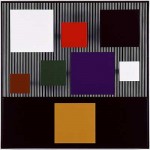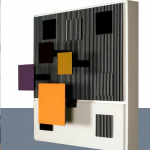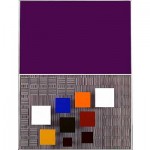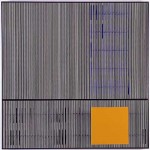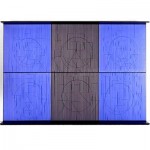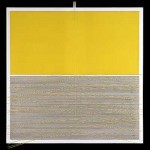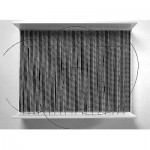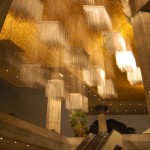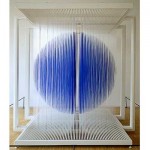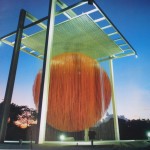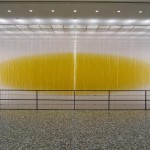Project Description
Jesus Rafael Soto
(June 5, 1923 – January 14, 2005)
Venezuelan sculptor and painter, and one of the principal founders of op and kinetic art movement.
“The function of any work of art is to stimulate reflection; its interest is highly conceptual, although the artist must resort to sensorial means to make his concepts clear.” J.R.S
He was born in Ciudad Bolívar, Venezuela. He began his artistic career as a boy painting cinema posters in his native city. 1942 Soto received a scholarship from the Guyana regional authority to study at the Escuela de Artes Plásticas y Artes Aplicadas in Caracas, where he arrived in September 1942. He took classes in “pure art” and the “training course for instructors in art education and history”. Later, he directed the Escuela de Artes Plasticas in Maracaibo from 1947 to 1950, when he left for Paris were he continue to develop his artistic concepts and visions. While in Paris, began associating with Yacoov Agam, Jean Tinguely, Victor Vasarely and other artists connected with the Salon des Realités Nouvelles and the Galerie Denise René. By the 1950s and 1960s Soto arrived at the pick of his artistic development achieving breakthrough works with his own technique of geometric abstract paintings, using a limited and carefully selected array of flat colors.
Soto is particularly recognized for his “penetrables,” interactive sculptures which consist of square arrays of thin, dangling tubes through which observers can walk. It has been said of Soto’s art that it is inseparable from the viewer; it can only stand completed in the illusion perceived by the mind as a result of observing the piece.
From 1970 until the early 1990s, Soto’s works appeared in places such as the Museum of Modern Art and the Guggenheim in New York City, as well as the Centre Georges Pompidou in Paris, The Venice and the São Paulo Biennial both in 1996. In 1973, the Jesús Soto Museum of Modern Art opened in his native hometown Ciudad Bolívar under and the directorship of Italian op artist Getulio Alviani. The museum was designed by Venezuelan architect Carlos Raúl Villanueva and unlike conventional art galleries, a large number of the exhibits are wired to the electricity supply so that they can move. Today the museum stands has homage to Sotos outstanding career.
Many of Soto’s work have adorned Caracas’ main arts centre, amongst them the Teresa Carreño Cultural Complex and The Soto sphere in Caracas in the Autopista Francisco Fajardo.
Jesús Rafael Soto died in 2005 in Paris, and is buried in the Cimentière du Montparnase.
For more information visit Soto’s Official Website
http://www.jr-soto.com/fset_menuprincipal_uk.html

